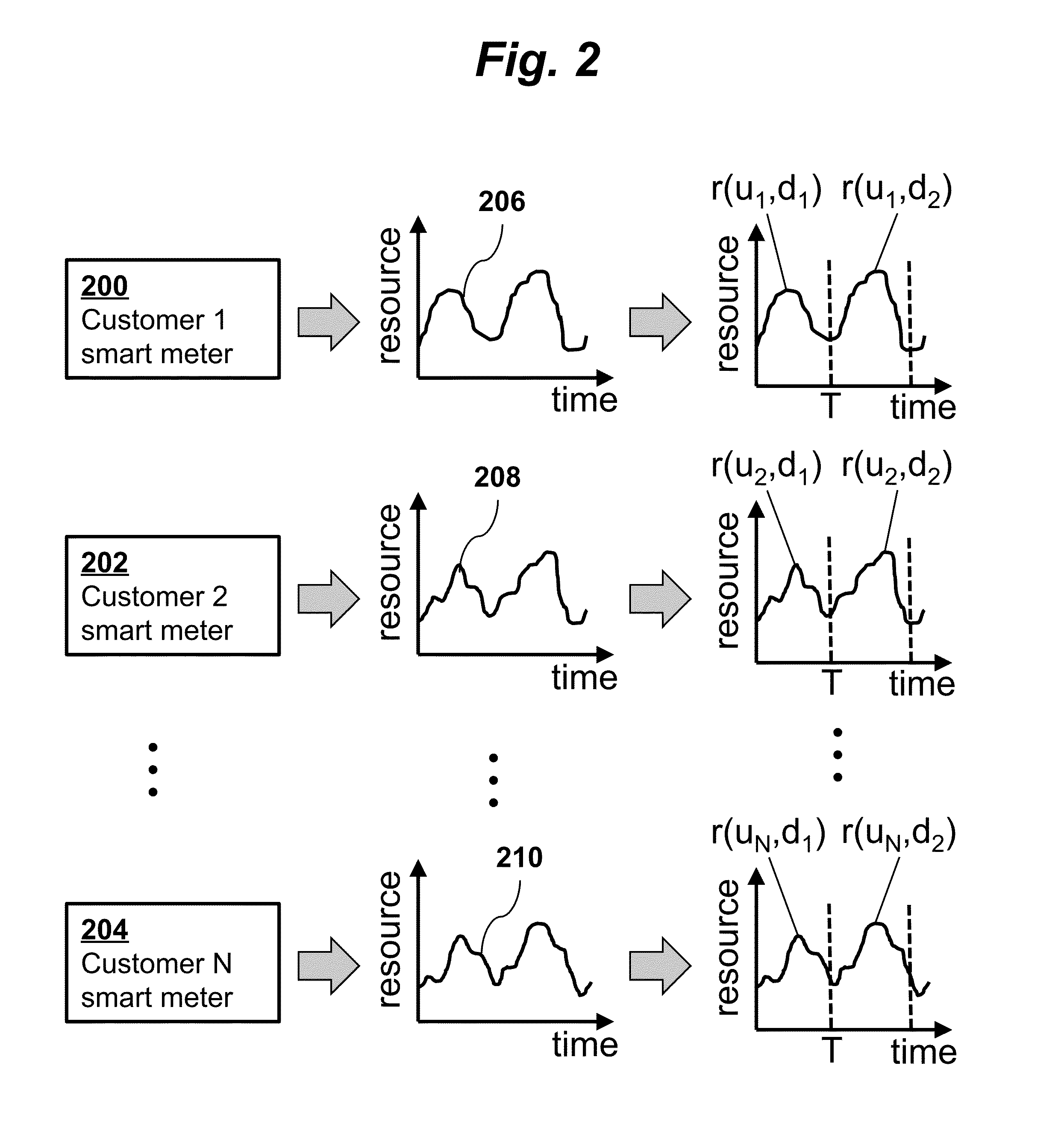Customer energy consumption segmentation using time-series data
a technology of time-series data and customer energy consumption, applied in the field of customer energy consumption segmentation using time-series data, can solve problems such as unsolved problems
- Summary
- Abstract
- Description
- Claims
- Application Information
AI Technical Summary
Benefits of technology
Problems solved by technology
Method used
Image
Examples
Embodiment Construction
[0022]An overview of a preferred embodiment of a method for utility customer segmentation based on energy consumption data is shown in FIG. 1. Raw smart meter data 100 representing utility customer resource use is collected from smart meters. The raw data is then standardized 102 to produce standardized data which is then encoded by an encoding system 104 using an encoding dictionary 106. The encoded data 108 is then processed by a feature extraction process 112 to extract features (e.g., consumption lifestyle features) of the utility customers. Each of the lifestyle features of the utility customers is preferably a dictionary code distribution vector for each customer. These extracted features are then used in a customer segmentation step 114 to segment the customers based on the extracted features by clustering (e.g., adaptive K-means clustering, which may using distance metric such as cosine distance between lifestyle feature vectors). The encoded data 108 is also used to generat...
PUM
 Login to View More
Login to View More Abstract
Description
Claims
Application Information
 Login to View More
Login to View More - R&D
- Intellectual Property
- Life Sciences
- Materials
- Tech Scout
- Unparalleled Data Quality
- Higher Quality Content
- 60% Fewer Hallucinations
Browse by: Latest US Patents, China's latest patents, Technical Efficacy Thesaurus, Application Domain, Technology Topic, Popular Technical Reports.
© 2025 PatSnap. All rights reserved.Legal|Privacy policy|Modern Slavery Act Transparency Statement|Sitemap|About US| Contact US: help@patsnap.com



